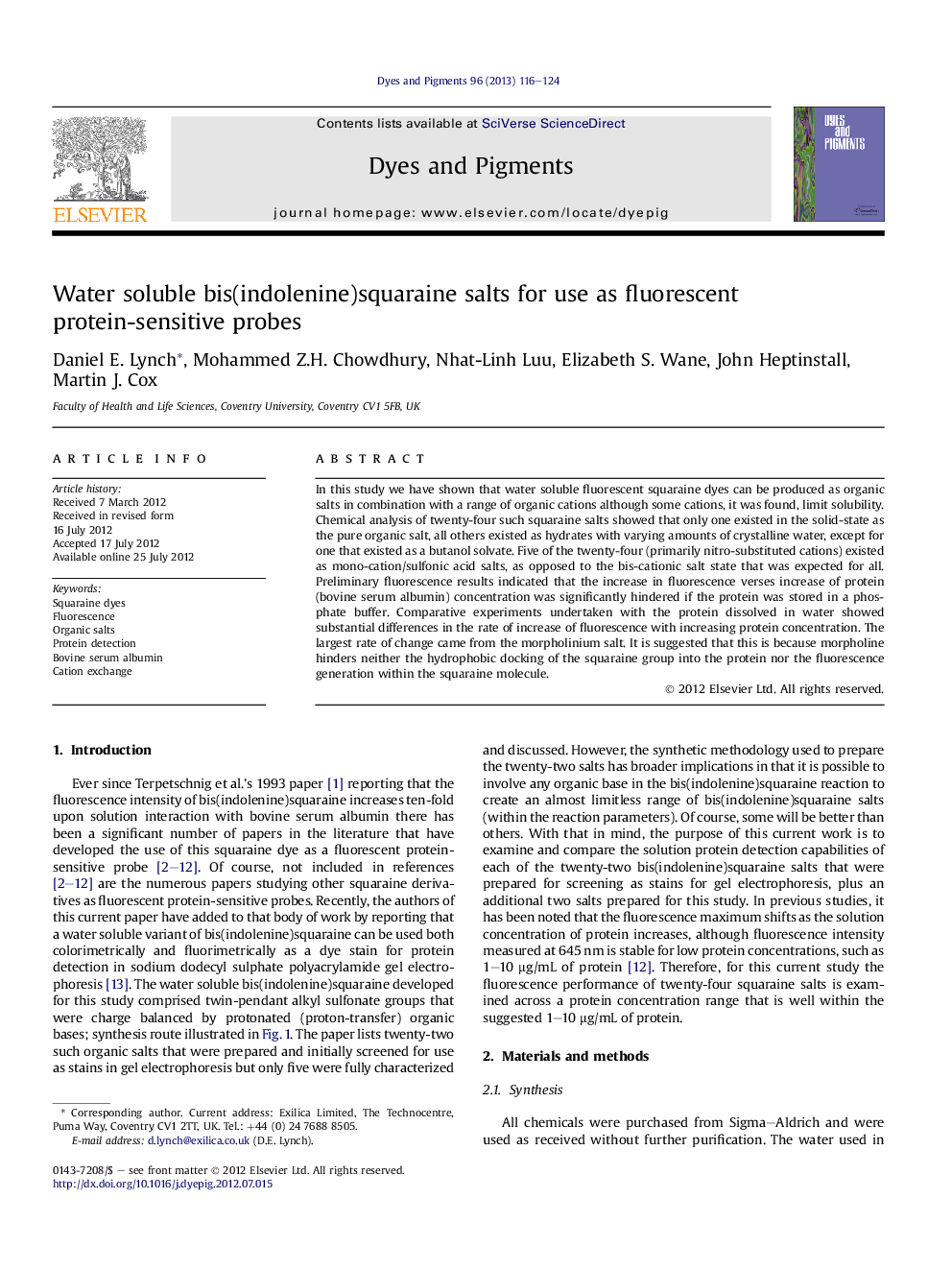| Article ID | Journal | Published Year | Pages | File Type |
|---|---|---|---|---|
| 176881 | Dyes and Pigments | 2013 | 9 Pages |
In this study we have shown that water soluble fluorescent squaraine dyes can be produced as organic salts in combination with a range of organic cations although some cations, it was found, limit solubility. Chemical analysis of twenty-four such squaraine salts showed that only one existed in the solid-state as the pure organic salt, all others existed as hydrates with varying amounts of crystalline water, except for one that existed as a butanol solvate. Five of the twenty-four (primarily nitro-substituted cations) existed as mono-cation/sulfonic acid salts, as opposed to the bis-cationic salt state that was expected for all. Preliminary fluorescence results indicated that the increase in fluorescence verses increase of protein (bovine serum albumin) concentration was significantly hindered if the protein was stored in a phosphate buffer. Comparative experiments undertaken with the protein dissolved in water showed substantial differences in the rate of increase of fluorescence with increasing protein concentration. The largest rate of change came from the morpholinium salt. It is suggested that this is because morpholine hinders neither the hydrophobic docking of the squaraine group into the protein nor the fluorescence generation within the squaraine molecule.
Graphical abstractFigure optionsDownload full-size imageDownload as PowerPoint slideHighlights► We report the synthesis of water soluble sulfonate bis(indolenine)squaraine salts. ► We report the fluorescence for twenty-four salts in increasing protein solutions. ► A comparison of the rate of fluorescence increase spotlights the morpholinium salt. ► It is suggested that the morpholinium salt has advantages for this work.
